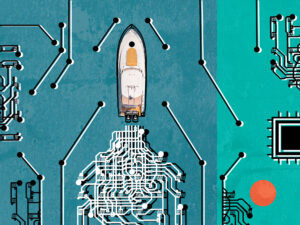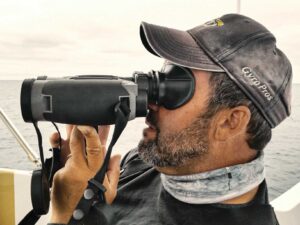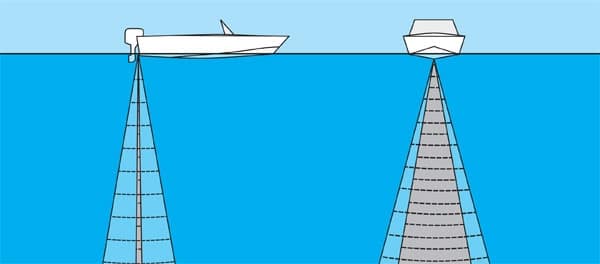
Look at the state of transducers, and you’ll see cutting-edge fish finding. Any image on your fish-finder screen originates with data gathered by a transducer. Transducers are always a couple of steps ahead of available fish finders, and currently, the transducers that are driving innovation are those developed for side scanning.
**High Def
**Side-scanning transducers are low-power, short-range tools that produce an unprecedented level of detail in screen images despite these limitations. They provide pictures of the underwater world that are nearly photographic in detail. The same transducers that enable side scanning have recently been adapted to allow dedicated down scanning, which provides a view beneath your boat just like that of a conventional fish finder but with detail and perspective that have been unattainable with traditional transducers.
Two manufacturers lead the charge here: Humminbird is a pioneer in this field, and Lowrance has entered the market more recently.
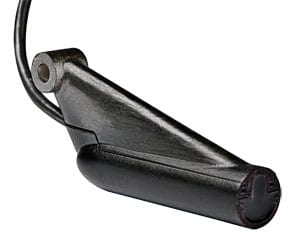
While side-scanning sonar first caught on with freshwater fishermen, it is increasingly finding its way to the helm of saltwater boats. We looked at the fishing application of these machines last year, but they seem to be growing in popularity among saltwater anglers. Granted, side scanning, as well as the derivative down scanning, is not much good beyond 200 feet, but the majority of wrecks you’re likely to fish are shallower than that. A tremendous amount of our fishing takes place within 200 feet of the boat. This technology is a good match for most saltwater fishermen.
Side-scan transducers have some particular quirks. They must be mounted so they have a clear view to both sides of the boat. This means mounted on the transom, on the lowest portion of the keel, or in-hull, paired up on either side of the keel and joined with a Y-connector.
The in-hull option isn’t practical on trailered boats, as the transducer must protrude from the bottom in order to see out to the side. Beyond placement, the transducers themselves have particular design requirements that must be met.
**Transducer-DrivenVision
**The configuration of the transducer is key to producing a detailed image, says Mark Gibson of Humminbird. Traditional transducers broadcast a round sonic cone into the water. “Each pulse of the sonar transfers one vertical line of pixels to the right-hand side of the display screen,” he says. “When you have 20 degrees of coverage, you are seeing so much stuff at one time that the unit can’t interpret it all. When too much information comes in at once, the tallest or most prominent targets are retained and the rest of the data is dropped.” The result is the generalized fish-finder picture we are accustomed to seeing.
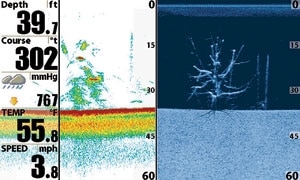
In side imaging, the transducer is elongated in one dimension to produce an extremely thin fan-shaped beam. “You are creating a laser-thin beam front to back, 1-degree or a half-degree thick,” says Gibson. The thin slices of data, returned up to 30 times per second, build a composite image of the underwater feature that’s rich in detail. As the thin segments of data are assembled, the broadcast angle of the beam helps create a 3-D modeling effect on the display screen, creating shadows and a sense of perspective.
“Instead of shooting straight at the target, the side scanner is aimed at an angle,” says Gibson. “When the beam is angled, different parts of the target reflect at different times.” The resulting composite image creates the illusion of perspective in the image.
Since side-scan transducers shoot beams out to both sides of the boat, there is necessarily some overlap at the center, and this is where Humminbird gathers the echo return data to produce the down-scan image.
**Sideways and Down
**”Our down-scanner display takes the 15- or 20-degree overlap from the left and right beams to produce an image of what is directly below the boat,” says Gibson. Because the down-looking image is assembled from the same type of echo return, the detail and photographic appearance characteristic of the side scan are retained in the down-looking view.
Lowrance entered the ranks of the limited suppliers with its StructureScan just over a year ago and is currently using that technology to develop the down-scanning application. Lowrance product manager Lucas Steward is quick to point out the features that set the Lowrance technology apart from the competition’s: “What makes our transducers special is that we use six elements instead of four: two right, two left and two down.”
The dedicated down-aimed elements, he says, create a crisp view of the landscape everybody is used to seeing. The Lowrance configuration also allows adjustment in view area and is configured to more closely resemble traditional sonar, with power output and an angle of coverage that can be tweaked to accommodate different depths.
“With the two down-scan crystals, we get a 3-degree beam fore and aft; at 800 kHz output we get a 30-degree down-scan coverage, and at 244 kHz, the same 3 degrees front and back but 55 degrees of coverage right to left,” Steward says. As with traditional sonar, the lower frequency targets deeper water with a wider cone; the higher frequency is designed for shallower water, with a narrower field of view.
“I use the 800 kHz for water shallower than 80 feet,” says Steward. “Deeper than 80 feet, I use the 455 kHz.”
In line with tradition, the Lowrance down scan is engineered to function at speed. “We designed the transducer to run at high speeds, so we can track bottom at 50 miles per hour,” he adds.
These specialized transducers aren’t likely to replace the traditional, proven powerhouse transducers, but they can provide an informational edge in a lot of our inshore and nearshore fishing.

